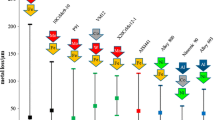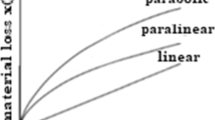Abstract
Due to the high-temperature boiler corrosion induced by chloride-rich fly ash deposits, steam generation in today’s Waste-to-Energy (WtE) plants is typically designed only for 40 bar/400 °C as an economic compromise between acceptable corrosion rate and maximum power generation. The high-corrosive metal chlorides in the fly ash can react with SO2 forming low-corrosive sulfates. The sulfation efficiency is enhanced by high SO2 levels and sufficient residence time of the flue gas at high-temperatures (700–900 °C). The fly ash sulfation was tested in full scale in a Swedish WtE plant by applying the economic sulfur recirculation method. Probes of several alloys (16Mo3, Inconel 625, Sanicro 28) were exposed for 1000 h at controlled material temperatures in the superheater position, at normal and during sulfating operation respectively. Analyses of the fly ash showed that the molar Cl/S was decreased to values well below 1 and the corresponding corrosion rates of the individual material samples were less than half when sulfur recirculation was in operation. These positive findings demonstrate that the sulfur recirculation process has high potential for low-corrosive high-temperature steam generation (T ≈ 500 °C) and improved electricity production. Further steam superheating can be realized by staged superheating using small amounts of secondary fuel.








Similar content being viewed by others
References
Bilitewski B (2006) http://www.umweltbundesamt.de/abfallwirtschaft/nachhaltigkeit/dokumente/energie-aus-abfall-verbrennung.pdf (in German)
Gohlke O, Martin J (2007) Drivers for innovation in waste-to-energy technology. Waste Manage Res 25:214–219
De Waart H, van Berlo M (2008) Proceedings of the 16th North American Waste-to-Energy Conference, Philadelphia
Grabke HJ, Reese E, Spiegel M (1995) The effects of chlorides, hydrogen chloride, and sulfur dioxide in the oxidation of steels below deposits. Corros Sci 37(7):1023–1043
Kawahara Y (2002) High temperature corrosion mechanisms and effect of alloying elements for materials used in waste incineration environment. Corros Sci 44:223–245
Nielsen HP, Frandsen FJ, Dam-Johansen K, Baxter LL (2000) The implications of chlorine-associated corrosion on the operation of biomass-fired boilers. Prog Energy Combust Sci 26:283–298
Folkeson N, Jonsson T, Halvarsson M, Johansson LG, Svensson JE (2011) Mater Corros 62(7):606–615
Pettersson J, Asteman H, Svensson JE, Johansson LG (2005) Oxid Met 64(1–2):23–41
Boonsongsup L, Iisa K, Frederick WJ (1997) Kinetics of the sulfation of NaCl at combustion conditions. Ind Eng Chem Res 36:4212–4216
Iisa K, Lu Y (1999) Sulfation of potassium chloride at combustion conditions. Energy Fuels 13:1184–1190
Henriksson M, Warnquist B (1979) Ind Eng Chem Process Des Dev 18:2
Andersson S, Blomqvist E, Bäfver L, Claesson F, Davidsson K, Froitzheim J, Karlsson M, Pettersson J, Steenari B-M (2010) Project report WR-07, Waste Refinery, SP, Borås. http://wasterefinery.se/SiteCollectionDocuments/Publikationer/Rapporter/Slutrapport_Svavelrecirkulation.pdf
Hunsinger H, Seifert H, Jay K (2007) Reduction of PCDD/F formation in MSWI by a process-integrated SO2 cycle. Environ Eng Sci 24:1145–1159
Hunsinger H, Seifert H, Jay K (2009) Dioxin’2009- 29th International Symposium on halogenated persistent organic pollutants, August 23–28, 2009, Beijing, China. Organohalogen Compd 71:532–537
Hunsinger H (2010) Proceedings of the 6th International Conference on combustion, incineration/pyrolysis and emission control, Kuala Lumpur, 26–29 July 2010
Author information
Authors and Affiliations
Corresponding author
Rights and permissions
About this article
Cite this article
Hunsinger, H., Andersson, S. The potential of SO2 for reducing corrosion in WtE plants. J Mater Cycles Waste Manag 16, 657–664 (2014). https://doi.org/10.1007/s10163-014-0271-9
Received:
Accepted:
Published:
Issue Date:
DOI: https://doi.org/10.1007/s10163-014-0271-9




